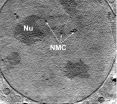(Press-News.org) Older adults with even mildly decreased levels of sodium in the blood (hyponatremia) experience increased rates of fractures and falls, according to a study presented at the American Society of Nephrology's 43rd Annual Meeting and Scientific Exposition. Falls are a serious health problem for the elderly and account for about 50 percent of deaths due to injury in the elderly.
"Screening for a low sodium concentration in the blood, and treating it when present, may be a new strategy to prevent fractures," comments Ewout J. Hoorn, MD, PhD (Erasmus Medical Center, Rotterdam, the Netherlands). However, hyponatremia does not appear to affect the risk of osteoporosis, as defined by low bone mineral testing, so more research is needed to understand the link between sodium levels and fracture risk.
The study included more than 5,200 Dutch adults over age 55, all with initial information on sodium levels and six-year follow-up data on fractures and falls. "A number of recent studies suggested a relationship between hyponatremia, falls, osteoporosis, and fractures," Hoorn explains. The authors' goal was to confirm these possible associations using prospective, long-term follow-up data.
About eight percent of the study participants, all community dwelling adults, had hyponatremia. This group of older participants had a higher rate of diabetes and was more likely to use diuretics (water pills) than those with normal sodium levels. Subjects with hyponatremia had a higher rate of falls during follow-up: 24 versus 16 percent. However, there was no difference in bone mineral density between groups, so hyponatremia was not related to underlying osteoporosis.
Nevertheless, the group with low sodium levels had a higher rate of fractures. With adjustment for other risk factors, the risk of vertebral / vertebral compression fractures was 61 percent higher in the older adults with hyponatremia. The risk of non-spinal fractures, such as hip fractures, was also significantly increased: a 39 percent difference.
The relationship between hyponatremia and fracture risk was independent of the increased rate of falls in the low-sodium group. Subjects with hyponatremia also had a 21 percent increase in the risk of death during follow-up.
Hyponatremia is the most common electrolyte disorder, usually developing because the kidneys retain too much water. "Although the complications of hyponatremia are well-recognized in hospitalized patients, this is one of the first studies to show that mild hyponatremia also has important complications in the general population," says Hoorn.
Further study will be needed to clarify the mechanism by which low sodium levels increase fracture risk. In the meantime, "Screening older adults for and treatment of hyponatremia in older adults may be an important new strategy to prevent fractures," adds Hoorn.
###
Study co-authors are Fernando Rivadeneira, MD, PhD, Joyce B.J. van Meurs, PhD, Gijsbertus Ziere, MD, PhD, Bruno H. Ch. Stricker, MB, PhD, Albert Hofman MD, PhD, Huibert A.P. Pols MD, PhD, Robert Zietse MD, PhD, André G. Uitterlinden PhD, M. Carola Zillikens MD, PhD (Erasmus Medical Center).
The authors reported no financial disclosures.
The study abstract, "Mild Hyponatremia as a Risk Factor for Fractures: The Rotterdam Study," [F-FC232] will be presented as an oral presentation on Friday, November 19 at 4:30 PM MT in Room 605 of the Colorado Convention Center in Denver, CO.
ASN Renal Week 2010, the largest nephrology meeting of its kind, will provide a forum for 13,000 professionals to discuss the latest findings in renal research and engage in educational sessions related to advances in the care of patients with kidney and related disorders. Renal Week 2010 will take place November 16 – November 21 at the Colorado Convention Center in Denver, CO.
The content of this article does not reflect the views or opinions of The American Society of Nephrology (ASN). Responsibility for the information and views expressed therein lies entirely with the author(s). ASN does not offer medical advice. All content in ASN publications is for informational purposes only, and is not intended to cover all possible uses, directions, precautions, drug interactions, or adverse effects. This content should not be used during a medical emergency or for the diagnosis or treatment of any medical condition. Please consult your doctor or other qualified health care provider if you have any questions about a medical condition, or before taking any drug, changing your diet or commencing or discontinuing any course of treatment. Do not ignore or delay obtaining professional medical advice because of information accessed through ASN. Call 911 or your doctor for all medical emergencies.
Founded in 1966, the American Society of Nephrology (ASN) is the world's largest professional society devoted to the study of kidney disease. Comprised of 11,000 physicians and scientists, ASN continues to promote expert patient care, to advance medical research, and to educate the renal community. ASN also informs policymakers about issues of importance to kidney doctors and their patients. ASN funds research, and through its world-renowned meetings and first-class publications, disseminates information and educational tools that empower physicians.
END
1. Potassium Citrate May Help Prevent and Treat Osteoporosis
Supplement Neutralizes Bone Damage Inflicted by the Western Diet
The Western diet creates an acidic environment in the body that removes calcium from bones and may contribute to the development of osteoporosis. Healthy adults who consume the standard US diet sustain a chronic, low-grade state of acidosis that worsens with age as kidney function declines, limiting urinary acid excretion. Reto Krapf, MD (University of Basel, in Bruderholz/Basel, Switzerland) and colleagues designed a study to see if daily alkali ...
LOS ANGELES (Nov. 19, 2010) – In a study of more than 4,500 children, researchers found those with higher waist circumferences had significantly higher pulse pressures, which is known to increase the risk of heart-related disorders, according to an abstract presented today at the American Society of Nephrology's Renal Week conference in Denver.
Gangadarshni Chandramohan, MD, a researcher at Los Angeles Biomedical Research Institute at Harbor-UCLA Medical Center (LA BioMed) and the lead author of the abstract, said the research team studied data from 4,667 children aged ...
Moderate to severe chronic obstructive pulmonary disease (COPD) may be an auto-immunity problem, according to researchers in Spain, who studied the presence of auto-antibodies in patients with COPD and compared them to levels of control subjects. They found that a significant number of patients with COPD had significant levels of auto-antibodies circulating in their blood, about 5 to 10 times the level in controls.
The findings were published online ahead of the print edition of the American Thoracic Society's American Journal of Respiratory and Critical Care Medicine.
"We ...
TORONTO, Nov. 19, 2010--For every one person in Canada who is homeless, another 23 live in unsafe, crowded or unaffordable housing, meaning the country's housing crisis is even worse than previously thought, according to Dr. Stephen Hwang of St. Michael's Hospital in Toronto.
Those "vulnerably housed" people have the same severe health problems and dangers of assault as homeless people, said Hwang, principal investigator of a new report on housing and health issues in Vancouver, Toronto and Ottawa.
"The key point is that Canada needs a national housing strategy," ...
Eating five portions of fruit and vegetables per day is one of the means that experts most frequently recommend for preventing cancer. Now, the European EPIC study carried out by researchers from 10 countries has shown that, in the case of lung cancer, the important thing is not just the quantity but also the variety of fruit consumed, which can reduce the risk by up to 23%.
"This research looks more deeply into the relationship between diet and lung cancer", María José Sánchez Pérez, co-author of the study and director of the Granada Cancer Registry at the Andalusian ...
Researchers from Institute of Environmental Science and Technology (ICTA), at Universitat Autònoma de Barcelona (UAB), and other universities have published a special section in the journal Ecological Economics that analyzes the link between ecological economics and political ecology. This issue stems from the institute's research on impacts and resistance at the "commodity frontiers", where the extraction of natural resources and the disposal of toxic wastes produce a range of economic, environmental, cultural and social conflicts.
The special issue, titled Social Metabolism, ...
Researchers from the University of Southampton have helped construct an online interactive world map which gives stark facts and figures about the health of women during pregnancy, childbirth and following the birth of their child.
Social scientists Professor Zoë Matthews and Dr Sarah Neal are working in collaboration with the White Ribbon Alliance for Safe Motherhood and the University of Aberdeen on a joint project worth in excess of £160,000 called 'The Atlas of Birth', which also includes a book, short film and flyers.
"We are using data from the United Nations ...
For the first time, there is no need to chemically fix, stain or cut cells in order to study them. Instead, whole living cells are fast-frozen and studied in their natural environment. The new method delivers an immediate 3-D image, thereby closing a gap between conventional microscopic techniques.
The new microscope delivers a high-resolution 3-D image of the entire cell in one step. This is an advantage over electron microscopy, in which a 3-D image is assembled out of many thin sections. This can take up to weeks for just one cell. Also, the cell need not be labelled ...
Scientists at The Children's Hospital of Philadelphia have identified both common and rare gene variants associated with the eating disorder anorexia nervosa. In the largest genetic study of this psychiatric disorder, the researchers found intriguing clues to genes they are subjecting to further investigation, including genes active in neuronal signaling and in shaping interconnections among brain cells.
Anorexia nervosa (AN) affects an estimated 9 in 1000 women in the United States. Patients have food refusal, weight loss, an irrational fear of weight gain even when ...
Boston, Mass. – Although people infected with HIV produce many antibodies against the protein encapsulating the virus, most of these antibodies are strangely ineffective at fighting the disease. A new study suggests why some of the most common of these antibodies don't work: they target the protein in a form it takes after the virus has already invaded the cell, when it's too late, report researchers at Children's Hospital Boston and their colleagues.
The findings, published online Nov. 14 in the journal Nature Structural & Molecular Biology, refocus attention on the ...



